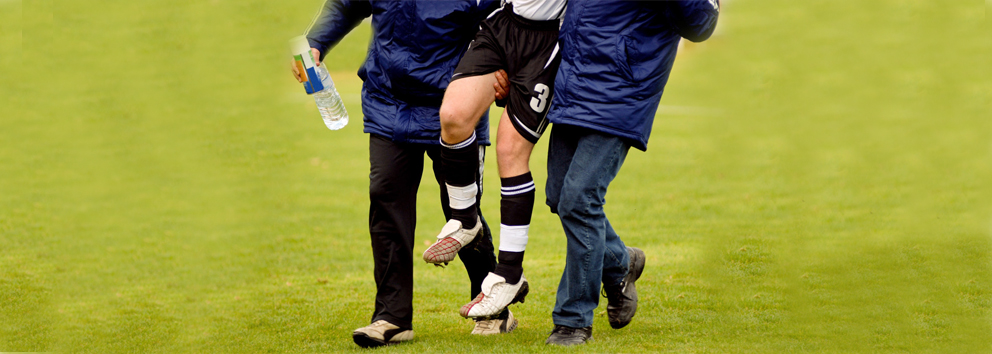
The Anterior Cruciate Ligament (ACL) is one of the four major supporting ligaments within the knee. Due to its orientation it protects the knee from rotational forces, as it is the major structure within the knee joint, providing stability during twisting and loading sports.
Athletes who participate in high demand sports such as football, soccer and rugby, are more likely to injure their knee causing rupture to the ACL.
Injuries to the Anterior Cruciate Ligament are extremely common and usually occur during excessive twisting, hyperextension and/or deceleration type injuries.
Concomitant injuries to the knee joint may also include other ligaments, the meniscus and/or articular cartilage.
Several studies have shown that female athletes have a higher incidence of injury than male athletes due to differences in physical conditioning, anatomic alignment and hormonal influence (estrogen effect on ligaments).
Diagnosis is usually made by obtaining a thorough history as well as performing a clinical examination. The patient will describe the classic symptoms such as hearing a pop within the knee joint and having immediate pain or swelling. It is often difficult to weight bear on that knee because of discomfort and a sensation of instability.
Clinical examination is consistent with moderate swelling involving the knee joint with limitation to motion. Manual testing (a Lachman Maneuver) will confirm anterior translation of the leg with relation to the thigh. Depending upon the degree of swelling, a Pivot Shift Test may also confirm rotational instability.
X-rays, though usually normal in appearance can show associated fractures. MRI has become the preferred diagnostic test as it will allow the physician to confirm a torn ACL and to visualize other soft tissue structures of the knee, such as, the articular cartilage and meniscus.
Our initial treatment of the athlete with an ACL rupture is consistent with icing, rest, compression and elevation. Limited weight bearing is often advised with the assistance of crutches.
A brace may also provide further stability as well as protect from concomitant injuries involving the knee during this initial phase of treatment.
Physical therapy to acquire early range of motion, improve quadriceps strength and to diminish swelling is crucial in the initial treatment of this injury.
Though surgical and non-surgical treatment options have been discussed within the literature, the physician must assess each patient for their activity level (demand level), age and degree of instability (with associated injuries) to determine whether or not surgery is indicated.
A patient with a very sedentary lifestyle may not warrant surgical reconstruction and may function well with a few activity restrictions, rehabilitation and bracing.
Athletes or those individuals with high-demand activity level often warrant surgical intervention. Treatment will consist of reconstructing the Anterior Cruciate Ligament as well as addressing any other associated injuries (chondral injuries and or meniscal pathology).
Primary anatomic surgical reconstruction is often accomplished by
utilizing the patient’s own tissue (autograft). Though there are
many graft options, bone patella tendon bone graft is the gold
standard in ACL reconstructive surgery because of its healing
potential (graft incorporation) and lower incidence of
re-rupture when returning to high demand sports. This is the
graft of choice for the young athlete who likes to participate
in contact/twisting sports.
Hamstring use (autograft), may on occasion be considered when bone patella tendon bone graft is not an option. One consideration is when reconstruction is performed in a high demand younger athlete with open growth plates. This will allow for soft tissue fixation away from the growth plates precluding growth arrest issues in this patient population. There may also be a consideration in using hamstring graft in those patients with a lower demand level.
Consideration for using cadaveric (allograft) tissue is usually for the middle-aged athletes who may have a lower demand level in sports. Allograft may also be in place for those individuals who have contraindications to using their own tissue as a graft source.
Reconstruction surgery is usually advised after the athlete regains their full range of motion and quadriceps strength; usually after 3 or 4 weeks of therapy. Sometimes, when there is a concomitant Chondral surface injury and/or meniscal tear, surgery may become eminent allowing for the surgeon to surgically address these injuries in the acute early phase subsequent to injury.
Immediately after surgery brace immobilization, crutch ambulation and physical therapy is advised. Therapy protocols may differ based on the type of injuries that the patient had. Return to sports is usually within 8 ½ to 9 months, allowing for adequate healing, return of strength and incorporation of the graft.
Surgical outcomes are usually excellent and the athlete will often return to full functional activities, including high demand sports.




